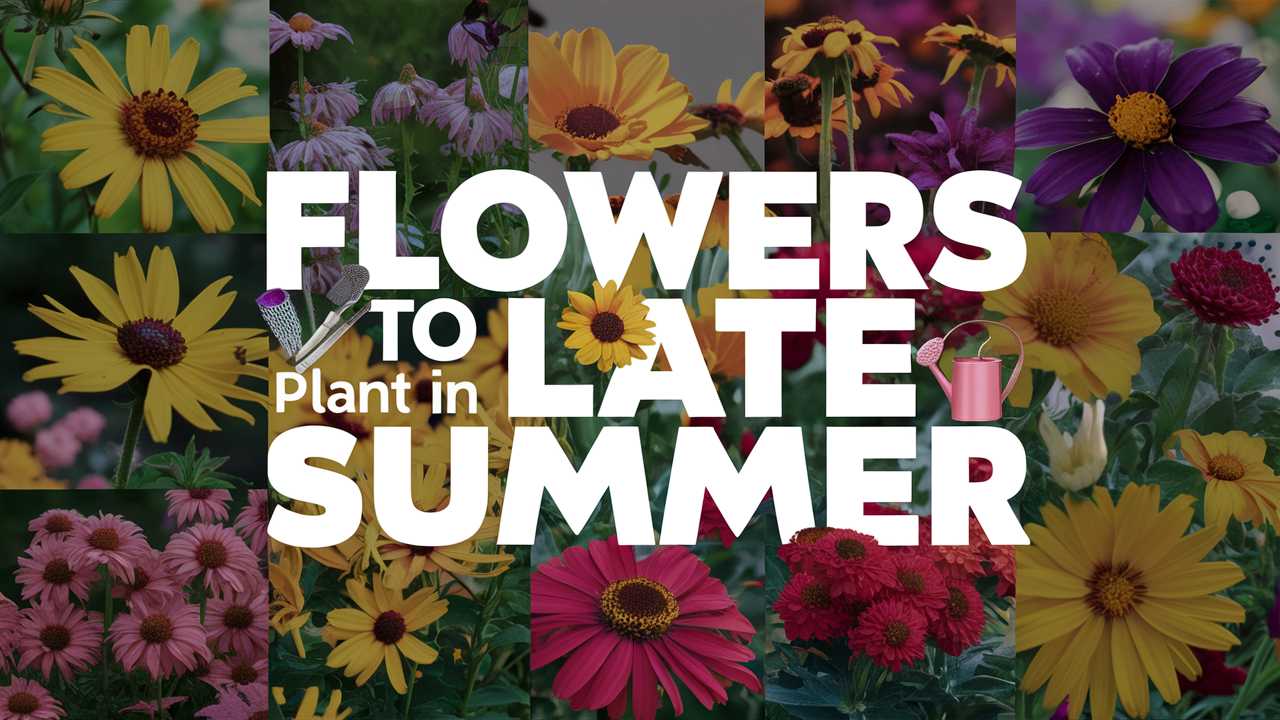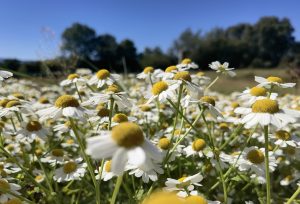As summer begins to wind down and many of our garden blooms start to fade, late summer brings an incredible opportunity for planting flowers that can extend the blooming season and enhance the garden’s beauty.
Let’s dig deep into some fantastic flowers that thrive when planted in late summer, ensuring ongoing color and vibrancy in your outdoor spaces.
Coneflower
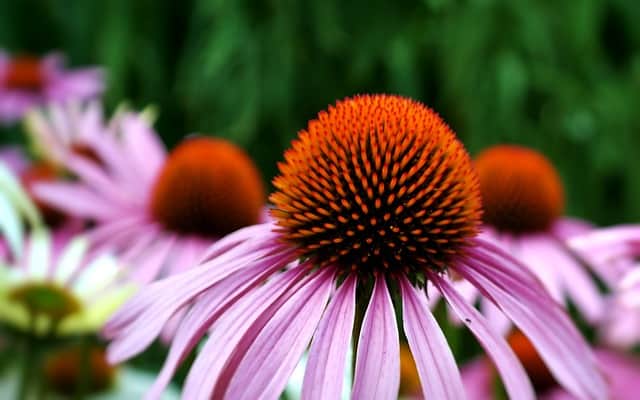
Known scientifically as Echinacea, coneflowers are resilient perennials with daisy-like blooms that are a favorite among pollinators. These stunning flowers come in various colors, including shades of pink, purple, and white. They thrive in well-drained soil and prefer full sun, making them an ideal choice for late summer planting.
Planting coneflowers in late summer allows them to establish their roots before the colder months, which will reward you with a bountiful display of blooms the following year. Additionally, their seed heads are not only attractive in the winter landscape, but they also provide a valuable food source for birds during the colder months. For a rewarding garden, consider grouping these beauties together for a bold, colorful display.
Rudbeckia
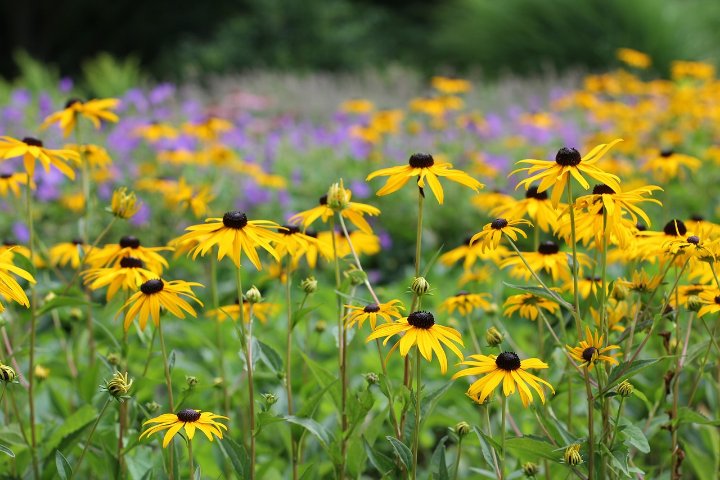
Rudbeckia, commonly known as black-eyed Susans, are iconic late summer bloomers that grace many gardens with their golden-yellow petals. These carefree perennials are drought-resistant and thrive in poorer soils, making them a perfect choice for late-season planting.
By planting Rudbeckia now, you give them plenty of time to establish strong roots before winter. Their sturdy stalks and vibrant flowers will attract a diverse array of pollinators, adding life to your garden. Additionally, their long-lasting blooms will provide a bright focal point well into fall, creating a cheerful atmosphere that enhances your garden’s overall charm.
Phlox
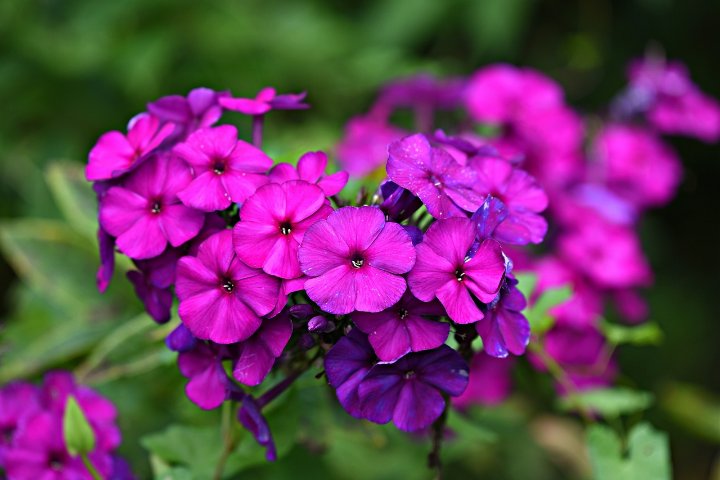
Phlox is a versatile genus of flowering plants that includes both annual and perennial varieties, showcasing clusters of fragrant flowers. Late summer is an excellent time to plant fall-blooming phlox, especially the perennial types, which will burst into color with rich shades of red, pink, and lavender.
Planting phlox in late summer gives them sufficient time to settle in before the colder weather, resulting in a spectacular display in early fall. Their sweet scent will also attract butterflies and bees to your landscape, creating a lively environment. All you need is a sunny spot with decent drainage to allow these vibrant beauties to shine.
Asters
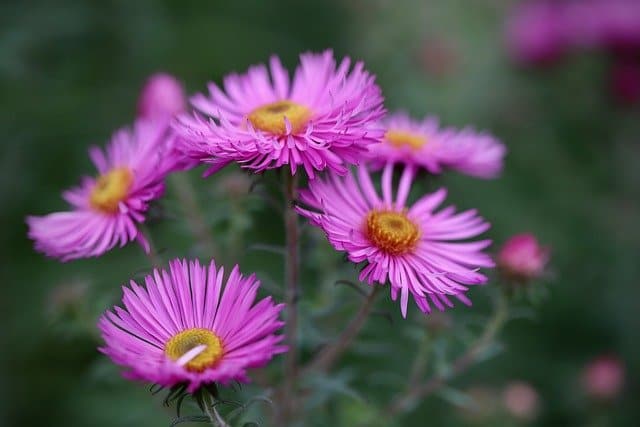
Asters are quintessential late summer and fall bloomers that bring a touch of softness and pastel colors to your garden. With numerous varieties available, you can find asters in hues ranging from deep purple to soft pink and even white. They thrive in full sun to partial shade and prefer well-drained soil.
When planted in late summer, asters will have ample time to develop sturdy roots, meaning your garden will be vibrant with color when many other flowers have already faded. Beyond their stunning visual appeal, asters are famous for attracting butterflies, making your garden a habitat rich with life. Their flowers can often last until the first frost, ensuring your garden stays lively as the seasons change.
Snapdragons
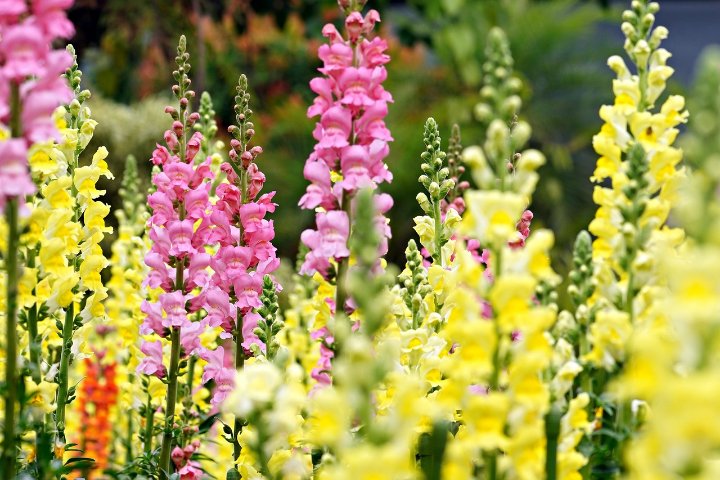
Snapdragons, or Antirrhinum, are wonderful flowers known for their unique shape and array of colors, from fiery reds to soft pinks and whites. Although typically planted in early spring, late summer is an excellent time for planting snapdragons in milder climates. Their cool-weather performance can often yield stunning fall blooms.
In planting snapdragons late in summer, you may experience a second bloom cycle, delighting in their whimsical charm as the days grow shorter. Best of all, they’re relatively low maintenance, making them a great choice for gardeners eager to see results without extensive efforts. Their delightful flower spikes will captivate admirers while making a charming addition to any garden bed or border.
Panicle Hydrangea

If you’re looking for a showstopper, the panicle hydrangea (Hydrangea paniculata) is a fantastic choice for late summer planting. Renowned for their large, conical flower heads, these hydrangeas display a stunning array of colors as they mature, transitioning from white to pink and even deepening into crimson.
These hardy shrubs thrive in full sun to partial shade, and relatively easy to care for—add them to your late summer planting list if you desire a vibrant fall display. By planting in late summer, you allow these beauties to establish their root systems to maximize their growth potential before the frost sets in. Ideal for backyard hedges or as stand-alone specimens, panicle hydrangeas create a magnificent visual statement in any garden.
Leadwort
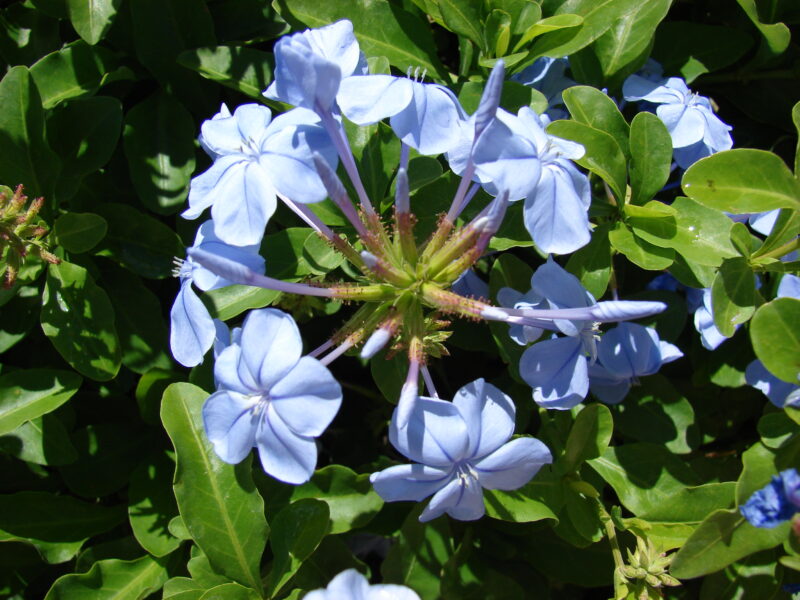
Leadwort (Ceratostigma) is a somewhat lesser-known, resilient perennial that delights gardeners with its striking blue flowers, which bloom in late summer. Known for its ability to thrive in various soil types, leadwort is an excellent addition to your garden if low maintenance and vibrant color are priorities.
By planting leadwort in late summer, you will witness an explosion of cobalt blue that harmonizes beautifully with other late bloomers. The strong presence of these flowers can create a lovely transition space in your garden, further enhancing the visual texture during the late summer and early fall months while offering attractive autumn foliage.
Chrysanthemums

Chrysanthemums, or mums, are a staple of fall showcasing vibrant hues of gold, yellow, and orange that mirror the changing foliage. Late summer is the perfect time to plant these cheerful flowers, as they require a few months to develop before they put on their spectacular autumn display.
By purchasing healthy, local varieties and planting them in well-drained soil with plenty of sunlight, you will likely enjoy a stunning arrangement of blooms that usher in the fall season. Mums pair beautifully with ornamental grasses and other fall bloomers, making them indispensable for creating seasonal arrangements that draw everyone’s attention.
Sedum
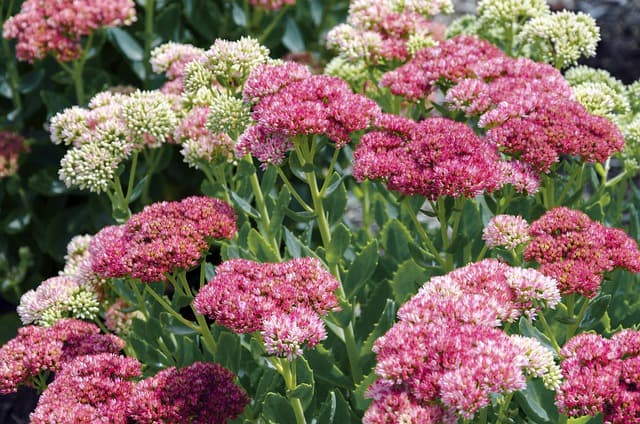
Sedums, often referred to as stonecrop, are succulent plants that thrive in conditions where other flowers might struggle. Their fleshy leaves and stunning clusters of star-shaped flowers come in various colors, making them incredibly appealing for late summer plantings.
When you plant sedum in late summer, you prepare your garden to have low-maintenance beauty that lasts into late fall. Additionally, they’re drought-tolerant and attract beneficial pollinators, making them a great choice for extending the garden’s vitality even during drier periods. Their unique textures and shapes provide lovely contrasts with other garden plants.
Dianthus
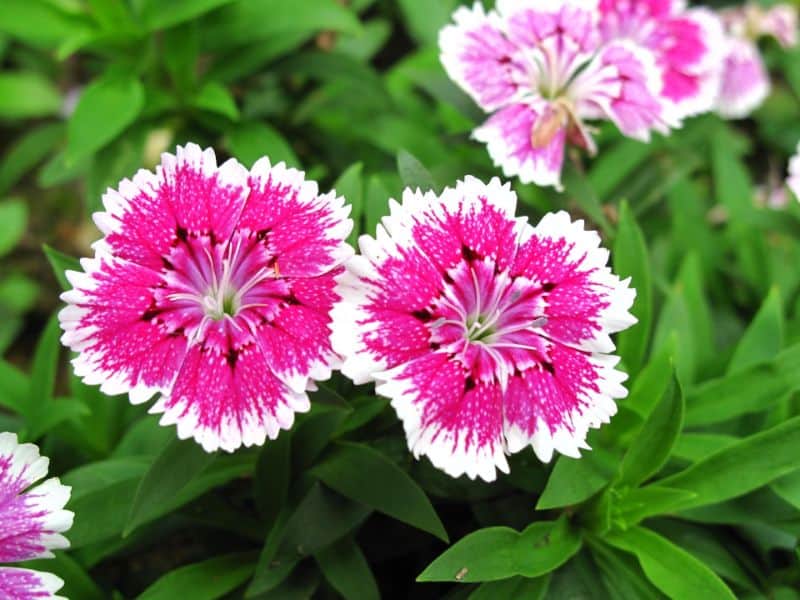
Dianthus, commonly known as pinks or carnations, is celebrated for its delightful fragrance and captivating blossoms. Many perennial varieties of dianthus can be planted in late summer, producing colorful flowers in tones of pink, white, and even red as autumn approaches.
The vibrant blooms from late summer plantings will often create a stunning backdrop for other flowers in your garden. Moreover, dianthus varieties are relatively easy to grow, requiring full sun and well-drained soil. Besides being visually charming, these flowers are known for attracting butterflies, adding an element of life and wonder to your garden.
Dahlia
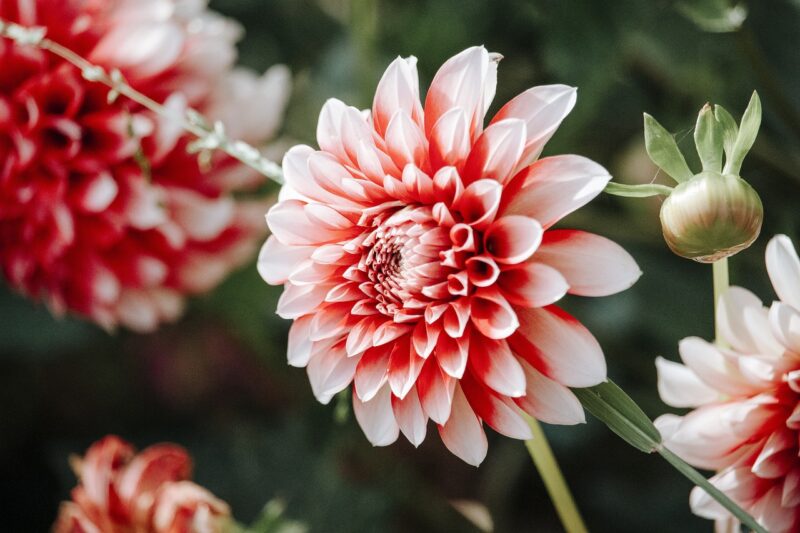
Long celebrated for their bold colors and intricate petal shapes, dahlias are excellent candidates for late summer plantings. While these beauties typically thrive when planted in spring, late summer planting is beneficial in warmer climates where they can extend their blooming season.
Dahlias can range from small decorative varieties to towering giants, giving you plenty of options based on your garden’s size and aesthetic. With proper care, your late-summer planted dahlias will produce a bountiful display of colorful blooms that will astonish you and your visitors throughout the fall.
Japanese Anemone
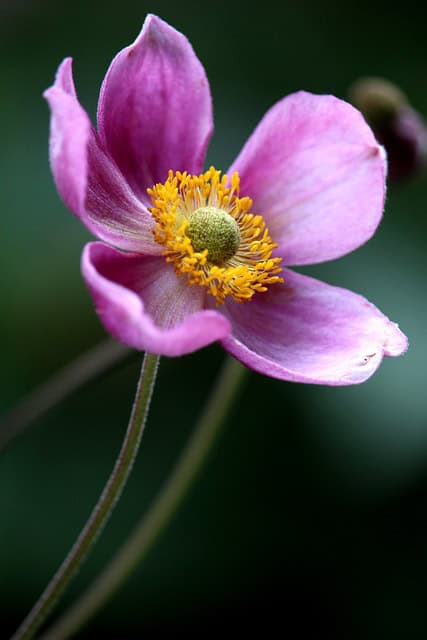
Japanese anemones are perennial plants known for their delicate flowers and elegant form. Blooming in late summer to early fall, these flowers come in shades of white and pink, gracing your garden with graceful sways in the breeze.
Planting Japanese anemones in late summer ensures they will establish before winter, resulting in abundant blooms when many plants are fading. These beauties thrive in partial to full shade and prefer moist, well-drained soil. You can use them to fill gaps in your garden, paired beautifully with other fall bloomers, adding a serene feel as the days shorten.
Joe Pye Weed
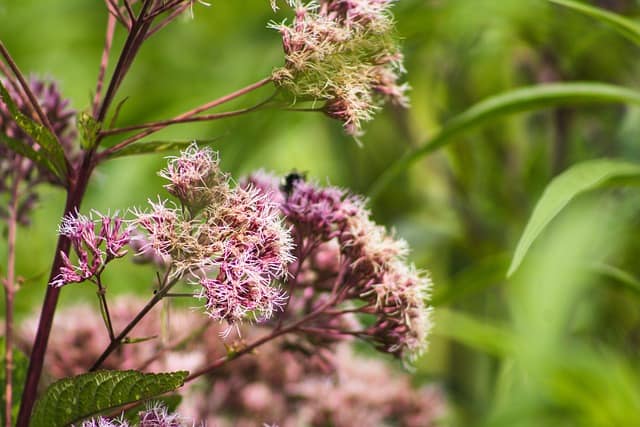
Joe Pye Weed is a tall native perennial that makes an impressive addition to any garden, drawing in butterflies and hummingbirds with its clusters of pinkish-purple flowers. This robust plant can reach heights of up to six feet, making it an eye-catching option for back borders or wildflower gardens.
When planted in late summer, Joe Pye Weed can follow up your fading summer blooms with tall, colorful flowers that will continue to attract wildlife. This plant flourishes in moist, well-drained soil and full sun or partial shade, providing an ideal solution for less-than-perfect soil conditions. The rustic charm of Joe Pye Weed will draw admiration all the way into the fall season.
Cosmos
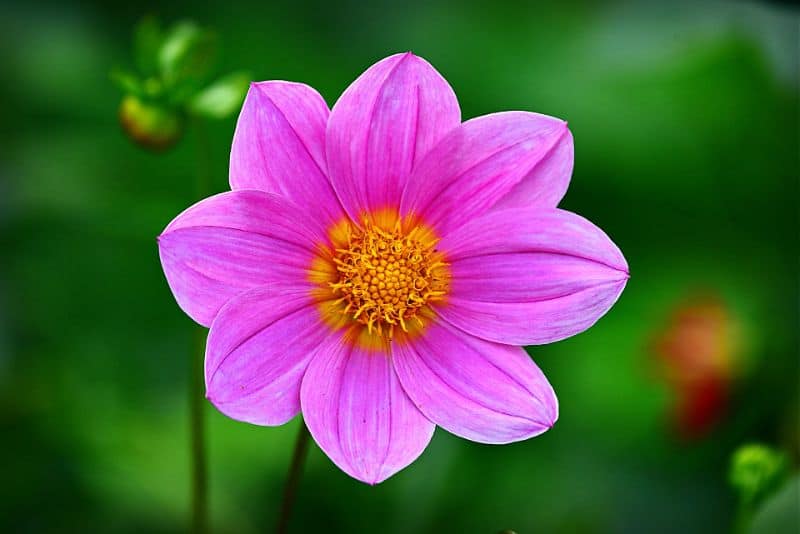
If you’re looking to add fun color to your late summer garden, cosmos are a fantastic option. These annual flowers are easy to grow and bloom profusely, producing bright, cheerful flowers in hues such as pink, white, and purple.
With a preference for full sun and well-drained soil, cosmos can start flowering in as little as 60-70 days after planting, making late summer a perfect time to sow their seeds. Their long-lasting daisy-like blooms will provide plenty of cheer late into the summer and fall, perfect for pollinator gardens or cutting for bouquets.
Butterfly Bush
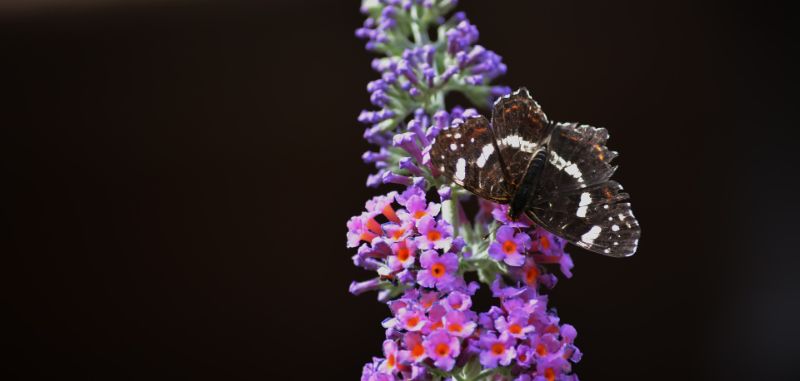
As the name suggests, the butterfly bush (Buddleia) is a real magnet for butterflies, making it an excellent choice for gardeners who appreciate biodiversity in their outdoor spaces. With its elongated flower spikes that bloom in shades of purple, pink, or white, the butterfly bush brings stunning color to your late summer plantings.
By planting butterfly bushes in late summer, you encourage these enchanting blooms to establish themselves and thrive. Not only will you enjoy vibrant colors well into the fall, but you’ll also cultivate a habitat for butterflies, providing essential resources for these pollinators. Just remember that butterflies prefer full sun and well-drained soil for optimal growth.
Ageratum
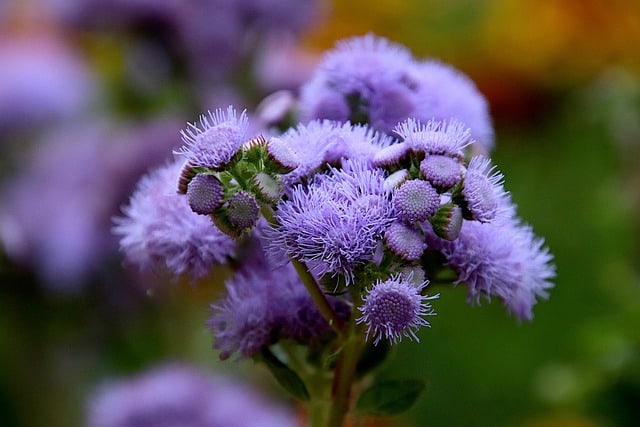
Ageratum, often referred to as floss flower, comes in a beautiful array of floriferous perennials and annuals that are perfect for summer and early fall blooms. Known for their fluffy, pom-pom-like flower heads in shades of blue, pink, and white, ageratums make lovely additions to borders and containers.
Planting ageratum in late summer allows you to create a colorful scene as the garden transitions to autumn. They thrive in full sun, requiring well-drained soil, and are fairly resilient, which means they’ll be an enduring component of your garden. More than just a pretty flower, ageratum also attracts butterflies, enhancing the ecosystem around your home.
Calendula
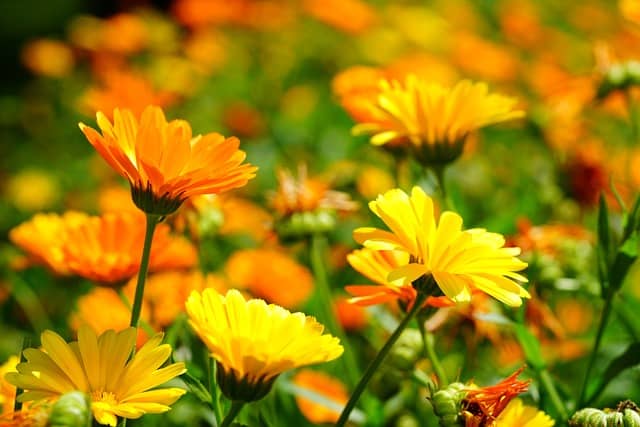
Calendula, also known as pot marigold, brings a warm, sunny glow to your late summer garden. These cheerful flowers are valued for their medicinal properties and contribute to edible landscapes, which makes them doubly beneficial for gardeners.
While gardeners often think of calendula as a spring or summer flower, they can be successfully planted in late summer to encourage blooms late into the fall. They prefer full sun and well-drained soil, and you’ll find they are relatively easy to grow. With vibrant orange and yellow petals that beckon pollinators, calendula will add a lively touch to your garden and can even be harvested for use in various herbal applications.
Russian Sage
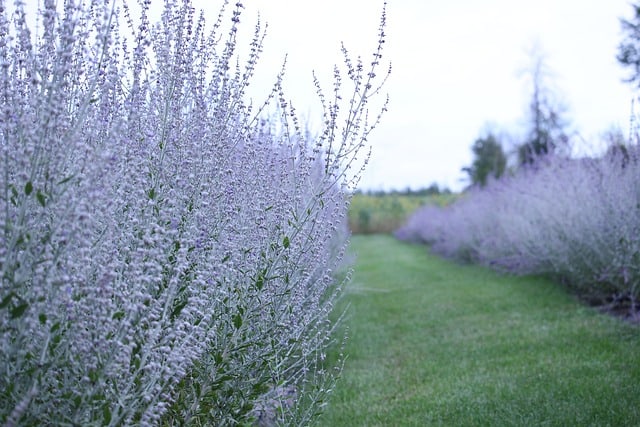
While not a traditional flower, Russian sage (Perovskia atriplicifolia) stands out for its striking silver foliage and plumes of lavender-blue flowers. This drought-tolerant perennial is perfect for late summer planting, especially in dry and sunny areas where few other plants can withstand harsh conditions.
Planting Russian sage late in the season will allow it to get established before winter, ensuring you can enjoy its wispy blooms when other flowers have less visual impact. Not only is it a beautiful addition to your garden, but Russian sage also attracts pollinators while providing excellent texture and form.
Balloon Flower

The balloon flower (Platycodon grandiflorus) is a charming perennial known for its unique balloon-like buds that expand into star-shaped flowers. In late summer, planting balloon flowers will reward you with captivating blooms that add an intriguing dimension to your garden.
They thrive best in full sun and will typically bloom in shades of blue, purple, and white. By planting these in late summer, you’ll provide them a chance to establish deep roots before winter, ensuring a vibrant display next spring and summer. Balloon flowers also complement other flowering plants well, making them versatile and attractive additions to mixed beds or borders.
Rose of Sharon
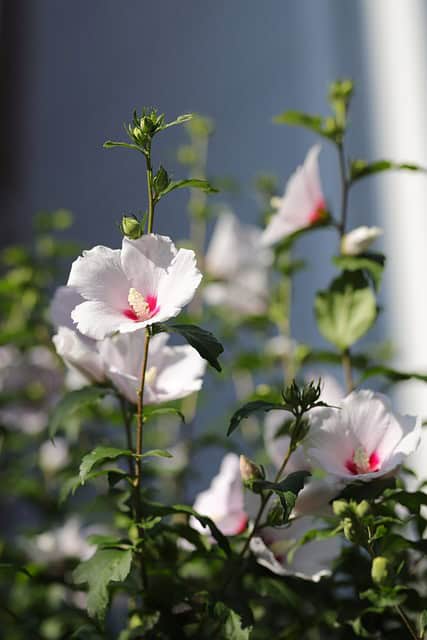
Known scientifically as Hibiscus syriacus, the Rose of Sharon offers stunning blooms of trumpet-shaped flowers in various colors. These deciduous shrubs thrive in full sun and well-drained soil, making them perfect for late summer planting.
Adding Rose of Sharon to your garden in late summer will give you vibrant blooms that last well into the fall. The prolific flowering patterns of this plant create an inviting space for pollinators, while its lush foliage serves as a lovely backdrop for any garden area. By planting in late summer, you give them time to firmly establish before cold weather sets in, ensuring resilience when spring rolls back around.
Helenium
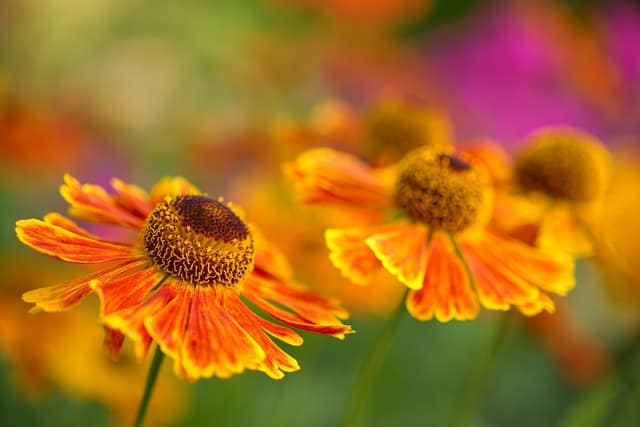
Helenium, also called sneezeweed, is a delightful late-blooming perennial that showcases bold colors ranging from yellow and orange to red and brown. They thrive in full sun and provide a vibrant display in the late summer landscape.
Planting helenium in late summer allows for a gorgeous array of blooms that can stand tall amidst other flowers. They attract a variety of beneficial insects and pollinators, which means you can enjoy their beauty while supporting local wildlife. Helenium is relatively drought-tolerant once established, making them a reliable choice that will shine late into the fall.
Blue Mist Shrub
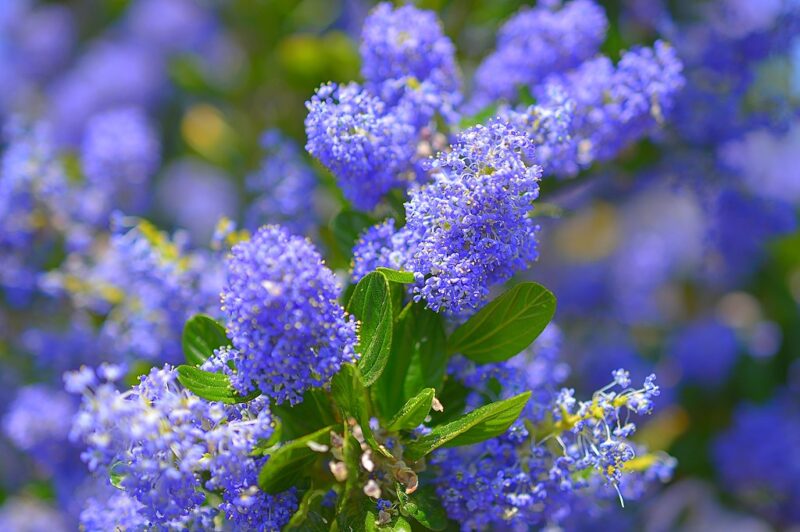
Ceanothus, or blue mist shrub, is an incredible choice if you seek to introduce a unique hue to your late summer garden. Known for its striking clusters of vibrant blue flowers, this shrub thrives in hot and dry conditions, making it ideal for regions where water conservation is vital.
Late summer planting of the blue mist shrub allows it to take root before winter sets in. Their blooming period lasts from mid to late summer, and they provide essential nectar for hummingbirds and butterflies, ensuring that your garden is alive with movement and color. This hardy and elegant evergreen can create a stunning focal point, ensuring your space radiates beauty even in harsher conditions.
Liatris
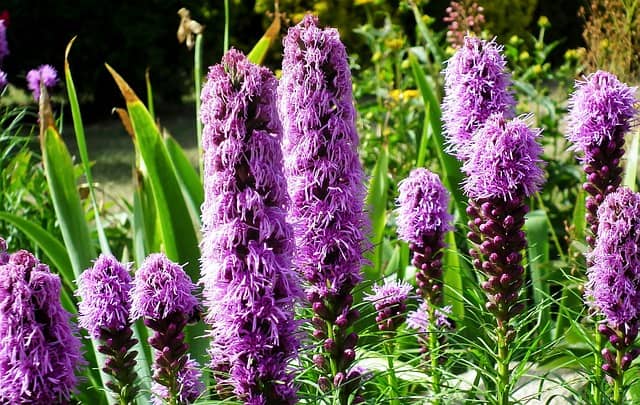
Liatris, commonly called gayfeather or blazing star, is a fantastic addition to late summer gardens, bringing vertical interest with its plume-like flower spikes. These native perennials are drought-tolerant and can thrive in various soils, making them a versatile choice for many garden settings.
By planting liatris in late summer, you prepare for a future garden that combines texture and color as these stunning flowers appear right into fall. The distinctive blooms will attract a variety of pollinators and create a visually captivating display alongside other flowering perennials. Liatris serves beautifully in borders or naturalized areas, ensuring your garden breathes life and curiosity.
Roses
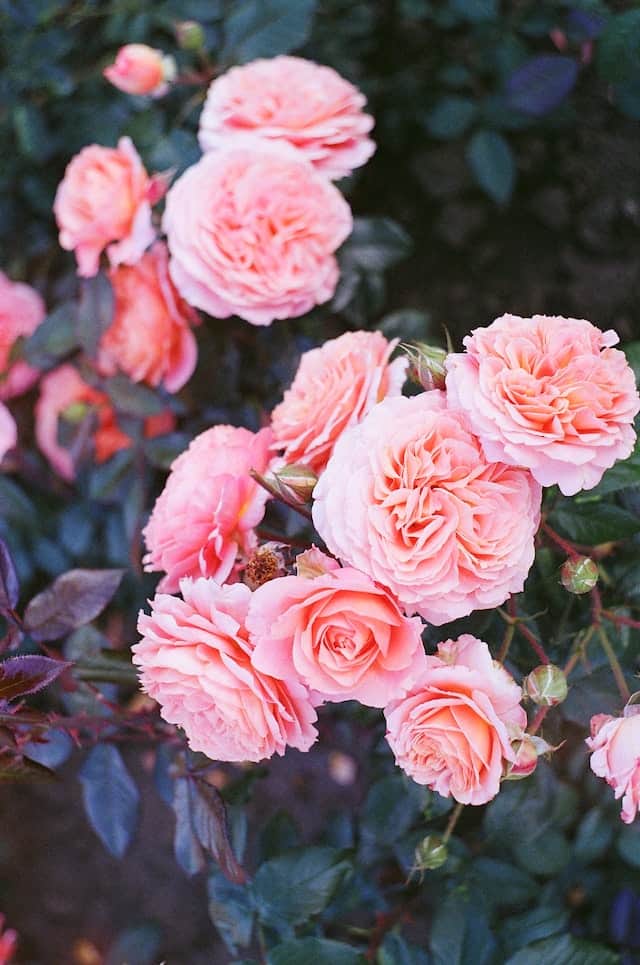
Roses are timeless classics that can transform any garden into a beautiful sanctuary. While many roses are best planted in spring, late summer can work well in certain climates, particularly where summer heat extends into the fall, allowing for robust root establishment.
When planting roses in late summer, choose varieties suited to your climate. Ensure they receive plenty of sunlight and have good drainage. Their lush blossoms not only bloom beautifully late into the season, but they bring fragrance, romance, and elegance to your outdoor space. By investing in your rose planting at this time, you set the stage for an eternally captivating experience.
Clematis
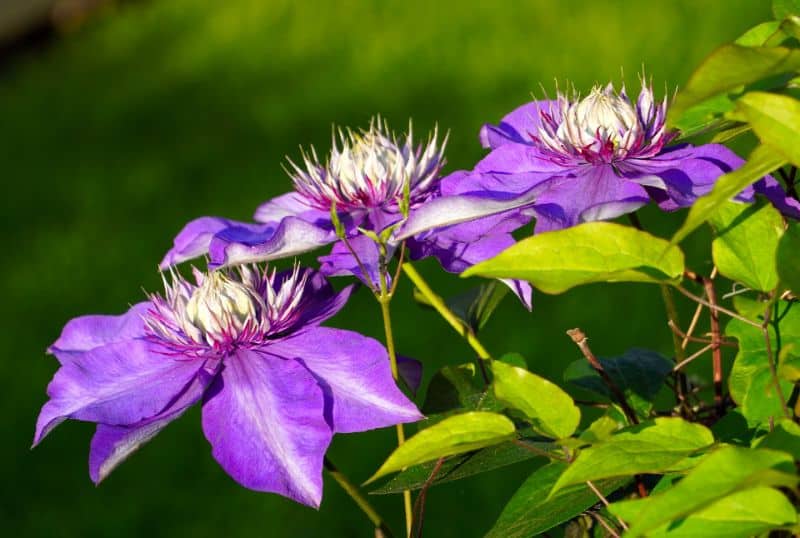
Clematis is a stunning flowering vine that climbs beautifully over trellises, fences, or walls. With its wide range of varieties and breathtaking flowers, clematis offers an excellent opportunity for those wanting to maximize vertical space in their gardening endeavors.
Late summer is an ideal time to plant clematis one or two months before autumn begins. This gives it an opportunity to establish a strong root system before going dormant during winter. When spring rolls around, they will likely reward you with vibrant blooms in various colors and forms. These elegant vines will create cascading charm, enveloping arbors and adding a whimsical aspect to your garden.
Zinnias
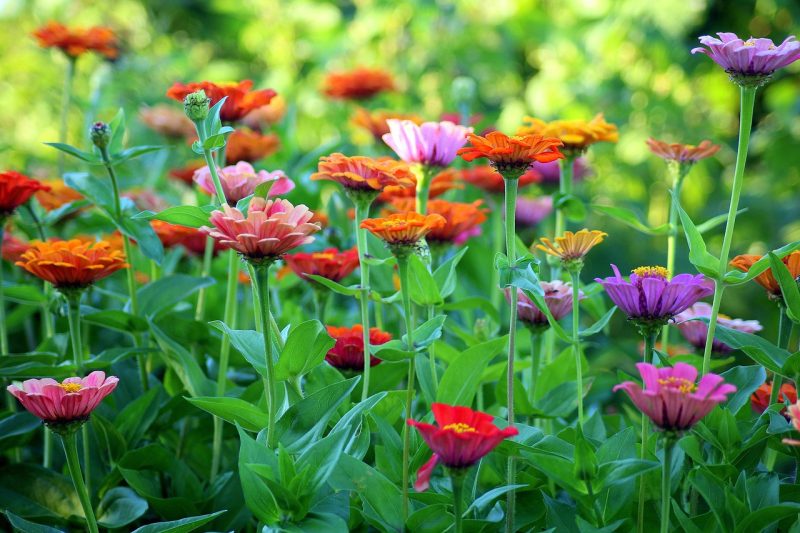
Lastly, zinnias are cheerful flowers buzzing with vibrant colors, making them an ideal addition to any late summer garden. They offer a journey into a kaleidoscope of colors, and their easy-growing nature makes them accessible for gardeners of all levels.
Planting zinnias in late summer allows you to enjoy their dazzling blooms as the days grow cooler. They thrive in full sun and excellent drainage, making them perfect for sunny spots in your garden. Their long-lasting blooms not only bring enjoyment but also attract butterflies and bees, adding much-needed liveliness to your garden. With zinnias in your landscape, you’ll have a feast for the eyes through September and beyond.


